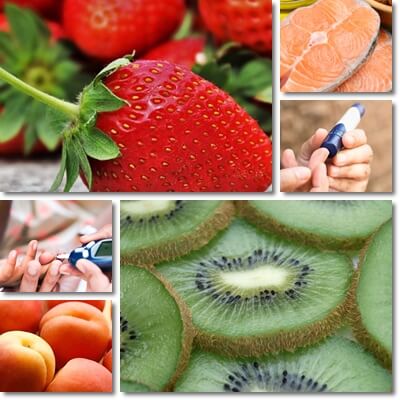The glycemic index represents a great tool for anyone looking to eat healthier and be healthier. While originally designed to help diabetics achieve blood sugar control and better manage their condition, the glycemic index can be repurposed to serve a broader purpose: clean, healthy eating. The average person can use the glycemic index as a reference point to determine which foods are good to eat more often and which are better consumed only occasionally and in smaller amounts.
Low-glycemic foods are by far the healthiest choice on the scale and sources of important benefits for health, including benefits independent of their low glycemic quality. Fruits such as blueberries, raspberries and berries in general, apples, pomegranate, but also nuts and seeds are all low-glycemic. Animal products such as eggs, fish and seafood and meat are considered not just low-glycemic, but zero-glycemic since they naturally have no carbohydrates and thus no impact on blood sugar whatsoever when consumed alone.

One of the biggest benefits of eating low-glycemic index foods is better blood sugar control and less chances of spikes in blood sugar levels, which is good for both diabetics and non-diabetics. But it’s not the only benefit. Eating low glycemic is good for the heart and vascular system, skin and brain and even weight loss. Each low GI food is a source of varied benefits for health, benefits that are not all determined by the low GI quality of the foods. If you are looking to eat low GI, here are 10 benefits of low glycemic foods are almost guaranteed.
#1 Low glycemic foods don’t raise blood sugar levels too much too fast
A low glycemic index food is essentially a food that has a limited carbohydrate content and, as a result, a limited impact on blood sugar metabolism, given normal food intakes. Low glycemic index foods such as tomatoes, cherries, grapefruit, strawberries or raspberries will have limited effects on your blood sugar levels. That is, while they will cause a rise in your blood sugar levels, the rise is steady and slow and most important, limited. A limited glycemic rise essentially means better blood sugar control which is a good thing for both diabetics and non-diabetics alike. Zero glycemic foods such as eggs and meat do not contribute to circulating blood sugar levels at all.
#2 Low glycemic foods have antidiabetic effects
What makes low-glycemic foods antidiabetic is the fact they help achieve better blood sugar control via a limited and controlled glycemic rise. Low-glycemic foods also contribute to weight management and even weight loss – maintaining a healthy, steady weight is shown to lower risks of type 2 diabetes and associated conditions such as hypertension and various forms of cardiovascular disease. Lastly, low glycemic foods are generally healthy foods, sources of vitamins, minerals, antioxidants and fiber, and actively promote metabolism health, improving insulin sensitivity and reducing insulin resistance, important antidiabetic benefits.

#3 Low glycemic foods are low in calories
For the most part, low glycemic foods are low in calories. Typically, the energetic value of a low glycemic food ranges from 15 kcal (kilocalories) per 100 g serving to around 65-75 kcal per 100 g serving. Low glycemic foods also have a limited carbohydrate content (most are high in water) and are good sources of dietary fiber, all of which makes them especially good for losing weight and keeping off excess weight.
#4 Low glycemic nuts and seeds are food for the brain
It’s not just fruits and vegetables that are low-glycemic. Most nuts and seeds fall in the category of low-glycemic foods too (see my list of low glycemic nuts and seeds). With average glycemic index values ranging from 15 to 20 or 25, nuts and seeds make excellent choices for anyone looking to eat low glycemic. What’s good about nuts and seeds is they are rich in fats which feed the brain and help support cognitive functions and intellectual effort. To get the right balance of healthy, servings of around 15 to 30 g are enough.
#5 Low glycemic foods nourish skin from within
Biologically active antioxidants in low glycemic fruits actively contribute to skin health. Pro-vitamin A carotenoids in orange and green fruits and vegetables and vitamin C support skin cell renewal, stimulate production of collagen for improved skin elasticity and delayed wrinkle appearance. Vitamin E and fats in nuts and seeds are incorporated into skin and other cell membranes and provide antioxidant protection.
#6 Low glycemic foods have antiaging properties
Fresh fruits and vegetables are sources of vitamin C which stimulates the production of collagen, a structural protein. Collagen is responsible for skin integrity and skin elasticity. Production drops significantly after the age of 30 which coincides with wrinkle appearance. Getting enough vitamin C from low glycemic fruits and vegetables promotes sustained production of collagen and has an antiaging effect.
Orange, yellow and green low-glycemic fruits and vegetables also contain pro-vitamin A carotenoids with antioxidant benefits for skin. Raspberries and pomegranates, both low glycemic fruits, contain ellagitannins which produce a compound called Urolithin A after being metabolized by gut bacteria. Urolithin A has been shown to exert antiaging benefits via mitochondria recycling.
#7 Low glycemic foods combat constipation
If you are on a low-glycemic food diet, then you are getting lots of healthy dietary fiber from fruits, vegetables, nuts and seeds. Dietary fiber regulates transit and promotes easy and regular bowel movements, relieving constipation naturally.
#8 Low glycemic foods have cardiovascular benefits
Fresh fruits, vegetables, nuts and seeds ranking low on the glycemic scale are full of cardiovascular benefits. Low glycemic fresh fruits and vegetables provide vitamin C which improves blood vessel structure via synthesis of collagen which maintains the elasticity of blood vessel walls, as well as helps keep arteries clear of cholesterol plaque. Low glycemic fruits such as red tomatoes, pink grapefruit, gac fruit, Cara Cara oranges and rose hips contain the carotenoid antioxidant lycopene with blood pressure lowering benefits.
Low glycemic fresh fruits and vegetables are sources of phytosterols, plant-specific components that compete with cholesterol for absorption in the body and contribute to benefits such as lower total and LDL cholesterol levels. Dietary fiber, but also vitamin E and antioxidant fats in low-glycemic nuts and seeds further support cardiovascular function, while minerals such as magnesium and potassium provide blood pressure lowering benefits.
#9 Low glycemic foods are high in antioxidants
Whatever your choice of low glycemic food, it’s bound to provide antioxidants with important benefits for health. Blue, purple and black berries and fruits are high in antioxidant anthocyanins with scientifically proven anticancer properties. Red fruits are high in carotenoids, some with vitamin A activity.
Low glycemic foods such as red raspberries, black raspberries and yellow raspberries, pomegranates, rose hips, strawberries and blackberries contain ellagitannins which get metabolized into Urolithin A, a byproduct with strong antioxidant effects and scientifically proven antiaging properties. Low glycemic nuts and seeds are high in fats and vitamin E which provide antioxidant protection to every cell in the body, from skin cells to brain cells.
#10 Low glycemic foods are tonic and energizing
Most low-glycemic index foods are sources of natural sugars, mainly simple sugars such as fructose and glucose which get absorbed almost instantly into the bloodstream. Despite the limited glycemic impact, low-glycemic fruits and vegetables boost energy levels and provide quick energy for the body to use. Low glycemic nuts and seeds on the other hand are high in dietary minerals such as iron, magnesium and potassium which exert tonic effects, and good sources of most B vitamins which contribute to energy metabolism and boost vitality.
